#shun gama
Note
Is shun a furry

Shun: Don't deny it.
Kylyn: I'm not???
9 notes
·
View notes
Text
ACF, GAMA, IPU Urge Nigerians To Shun Protest
The Arewa Consultative Forum (ACF), the Gamji Members Association (GAMA) and Ibagun Progressive Union (IPU) have appealed to Nigerians to shun the August 1, 2024 planned protest against the federal government.
The three socio- cultural organisations made the appeal in separate statements made available to newsmen in Ilorin, Kwara State on Monday.
The chairman of the ACF in Kwara State, Dr Ghali…
0 notes
Text
Then Gama turned back upon it, he comes a pillar of electric
Each narrower heart, you love me
now. Reason, there is not
of. I never would not feel. Won’t
let up—so you will! And
with its lamenting names and the
loved—the rather Laws be
wrong; and the goodman shrinks in his
neck, nor did he make, with
gilded leaues or colour and a
narrow for you on their
wrigle tailes, perke as Peacock:
but nowe vpright hand that he
went round and rolling word, the cowards
the Brere in the gray
barbarian lower pleasures
of sea. Dream and that leads
the Brere wexe so bold, that you and
midnight with this piteous
haste to put on so soon; like the
winds blowing those detestable
that dies with Ida: something
more the silent night.
And truly tell it backwards, then
hey, for a lass wi’ a
crazy auld auntie Katie upon
the top of the beames
which to thy gloom the deed with
cold, enduring North. And
his stormy times as if it would.
Sweet flattered cry: all her
glory, I though that I view, yet
she neither she will open
its wings when you surety
for our son, if this be
so, the mother’s arms, and speak with
the brave man was on his
hoarie locks downe my helpless sight? The
fire. That is worse than we
wonder what you and I saw that
even till the world god’s
dread figure in the worst. The mornin’
to e’enin’, he hoasts
and sit beside my daughter rolled
him worthy proved—would this
is truthful, much that does thy stamp
they bear, and through a broken
and ease. Appear, and they will
make him three leathern thongs,
most terrible reticent gorge
in which there grey seniors
question Time in having survive
them go, slim shadows, the
blood, and oozed all o’er with a flush
her mind, in the midnight
my wings, a woe-worn ghaist I
hameward glide. Like the presence
gies to me. Then Gama turned
back upon it, he comes
a pillar of electric cloud,
flaying to my heele: but
nowe vpright honest meaning trade with
several flowers. It
is that he was grey, and our missive
through that shuns Love, as
we rode and brought her chekes pit
thou like anarchism thought
I want. Or to burst all links of
habit—there to wait for
their women’s flesh and love allows
swerve in the shadows on
my sleeve, these things of men who looked
upon that light, have tried
to replie well as he crept into
her puir Jenny for since
my will sealed not thus. Birds that she
seemed to play. Her when we
come wheeled in a silver by. He,
if he delay, tis a
work maybe? In every eye but
whether than his own coffin,
as he could know, is a given.
Like the hour or mortal
body down, of lying under
friend hath found out the
dark heart beat thick and give my body
takes on the dimensions
of sleep becomes you: and younge
again. The North to-night—
the color.—But thou, rich in all
her truth to me, trust me,
cousin Amy, speak to our life,
here, grows old with gratitude,
Shared, could truly tell it back
to thee: or kissing into
the secret name I keep that
name, calling on darkness.
Been out—at work must be done just
now. So it was told them
all-in-all, were we almost through
your hair into my boyling
brest through a fen of delicate
and rather, I’m made
of greene, colours meete tales of you,
by all mysteries and
gentleness than foe: whom self-contempt!
Between a cymballed
Miriam and night, and dream
of passionate and end
with the top of thee better objects
you tonight, I call
me no longer, he that white trillium
or viburnum, by
all his beard, let so much to
gratify it the genial
giant, Arac, rolled on a side,
and when her cheeks, like a
wild horn in a cataracts. Until
the Praises of youth
did he make, with men. For it’s jet,
jet black, an’ it’s like Braille.
#poetry#automatically generated text#Patrick Mooney#Markov chains#Markov chain length: 7#123 texts#ballad
0 notes
Text
Reaching out across Tumblr to all my G&S fans, @carpe-mamilia and I just got back from Harrogate from this year’s G&S Festival, and I have some thoughts about the shows which I think I just needed to get down.
Also, bonus shoutout to @carlodivarga-s for being an all-round charming presence and delightful surprise in Harrogate this year!
OK. Here goes.
Princess Ida (Savoynet)
As Stephen Turnbull (he of Harrogate ramblings on Facebook) mentioned, this is a production that could have only worked at the festival. With the two kings portrayed as Gilbert and Sullivan themselves, and the rest of the company (with the exception of Ida herself) costumed as choruses from the rest of the G&S universe.
I know that Ida is written in 3 acts, but to have two 15 minute intervals is a strange experience. Especially as the curtain came down on the Act I at 8:15, it felt as though we were only about getting started and we were all back out our seats and into the bar. When I saw Ida done in Southampton earlier this year, they split Act II in half and placed a single interval more squarely in the middle, and I didn’t think that the pacing or structure suffered as much as it perhaps could have done then.
My greatest issue with Ida is that.. it’s not a very interesting story? And certainly not a very good ending. It feels as though Sullivan far outshines Gilbert. Some of the plot points, too, feel very, well, seen-before? Most noticeably, the male trio dressing up in silly costumes and singing witty songs about it? Done in Patience (and much better, I should add!). That said, Ida definitely has some standout solos, in particular Gama’s two patter songs (’I’m such a disagreeable man’ and ‘Nothing whatever to grumble at’), and Death to the Invaders! is such a TUNE at the top of Act III, though I actually preferred it in Southampton, just as there was more drama and sense of impending peril.
The ending of the whole thing is pretty crap though. Here’s Ida, a feminist ICON who shuns men and rules a chorus of strong academic ambitious women who look down on men, and yet she sort of just limps across the finish line like, oh yeah, I guess I’ll just love you and marry a man and I was wrong about all my studies and thoughts of independence. Ugh.
Y’know what I want to happen to Ida? I want her to shun all the men and grow old, independent, and married to a woman. Princess Ida: a queer legend.
Trial by Jury & The Zoo (LOpSoc)
I can’t say too much about the productions because it was my old university group and I’m sure I can’t write without any bias, so I’ll focus on the shows.
Trial by Jury was my first real show as Musical Director so it’ll always have a spot in my heart, especially having studied law at university. Musically, it’s so well accomplished, at barely 30 minutes, Sullivan manages to cram in so much content, including the brilliant ‘A Nice Dilemma’ sextet (or septet if you count the chorus as one, too), as well as some beautiful patter songs and some great parts for the chorus. You can really see how the rest of the Savoy Operas took inspiration, and to a certain extent, structure, from this first piece.
That said, there are a few familiar elements missing from the piece that become G&S standards later on in the canon, including the contralto exposition song, the romantic leads’ duet, and, well, a second act. Still though, one of my favourites.
The Zoo on the other hand? I’ve now seen it three times, and whilst I enjoy the music, some of it really is quite good, I have no idea what actually happens. I think there are at least 3 plots intertwined with one another, but with no libretto to explore or explain those plots, it’s essentially three totally different stories happening at the same time, just... coincidentally at a zoo. Libretto is pretty naff, but there are some charming songs, such as the ‘Four Tarts and a Couple of Pairs’ jaunt, and the duel of the male and female chorus once the Duke has eaten and faints (??) (’Prop him up upon a chair, lay him flat upon his back’).
Good news though, that LOpSoc were nominated for best director and best chorus for this production which I thought was well deserved.
Ruddigore (Charles Court Opera)
Oh my word. I confess I’ve never been Ruddigore’s biggest fan, but boy oh boy am I a fan of Charles Court Opera, so the chance to get to see this production was high up the list, and it certainly didn’t disappoint. With a cast of 9 (and totally omitting the male chorus), this production was lively, sharp-witted, and for the first time in any production of Ruddigore that I’ve seen, or indeed been involved with, I followed every detail of the plot perfectly.
Only two bridesmaids made up the female chorus, and they also lent their voices to a mixed chorus for the ‘Painted Emblems of a Race’ and subsequent male-chorus numbers (though ‘Welcome Gentry’ was cut) which worked beautifully. Also, a nice little change to Mounted emblems of a race, as the three ancestors were portrayed as severed, mounted heads on the wall of the set. Sir Roderic did have an additional stage presence as he was also portrayed by the accompanying headless corpse come to life.
One of the absolute highlights of this production, too, was lovely, wonderful Simon Butteriss, who is always an absolute joy. With John Reed-esque lightness, but with a voice on form as ever, it was a joy to see him on stage. As it was the whole cast, really. Having seen CCO’s HMS Pinafore at the King’s Head in London in a tiny 100-odd seat fringe theatre with just a pianist, to see them on stage at the Royal Hall in Harrogate with a complete orchestra was really special.
Yeomen of the Guard (National Gilbert and Sullivan Opera Company)
Oh boy. I was so excited for this performance. And I was so disappointed. The victim perhaps of a festival matinee crowd, as I said to dear friends over dinner after the show, there are a certain number of ‘minimum requirements’ I expect of the NGSOC:
The cast remember their lines. Having a certain member of the principal cast prompted from the wings was... well. Awkward to say the least. And garnered the intake of breath you can imagine from the audience.
I expect the principal cast to be able to stick to time with the orchestra. Several times, the cast fell wildly out of time with the orchestra, making for highly awkward listening.
I expect the principal cast to be able to hit all the notes they’re expected to. Naming no names, but, with a certain soprano aria in Yeomen, there’s a rather important note towards the end that you cannot get wrong. And yet.
I expect the show to be lit well. If actors are stood singing in darkness, either the actor needs to find their light, or the lighting director needs to do a better job.
That all said, the chorus were fantastic, to the point I actually longed for them to come back on to stage whenever they were gone, but I must say of Andrew Nicklin’s direction... I found it lacking. The staging was particularly dull and unimaginative, with barely any choreography, or even any movement come to that. My first time actually seeing Yeomen on stage and... ugh. Y’know? That said, there were reports from a friend having seen it earlier in the week at the festival and it being remarkable, so.. maybe just an off-performance.
The Mikado (National Gilbert and Sullivan Opera Company)
Now, THIS is how you do G&S. The company were almost unrecognisable from the afternoon, and the show was packed to the rafters with joy, energy, and sheer brilliance. Genuine laugh out loud moments from a full auditorium who are, I’m sure, more than familiar with the source material! Andrew Nicklin who was conducting, made sure that the pace was kept up, and my word, just, my heart was pounding with, well, a combination of relief and amazement. I loved it.
In particular, Mae Heydorn as Katisha. Fuckkkkkk. This wasn’t your usual Katisha, this was a dazzling, glamorous Katisha, and although you’d think that might not work, it did. And what a voice. On the final note of Act I, Mae managed to outsing the full assembled company and orchestra with a note that travelled and reverberated into our very bones.
My only criticism would probably be that Richard Gauntlett, who also directed the show, delivered some of Ko Ko’s lines so fast, if you weren’t familiar with the show, you wouldn’t have a clue what he’d just said. That and Nanki-Poo, in a typical tenor manner, did tend to rush some of the songs, even when singing as part of a trio - perhaps a little indicative of not listening to his cast-mates. But alas.
____
OK, I think that’s all. A brilliant, lovely few days away. So much G&S. I loved it. So much so, I think I’m going to start a bit of an artistic project to create some more G&S content, so keep an eye if you’re interested!
-- Thomas
16 notes
·
View notes
Text
Nampō Roku, Book 2 (47): (1587) Eighth Month, Tenth Day, Morning.

47) Eighth Month, Tenth Day; Morning.
◦ Two-mat room.
◦ [Guests:] Maki hyōtai [牧兵太], Shiba kenmotsu [芝監物].
In all matters, everything was the same as on the second.
_________________________
¹Hachi-gatsu tō-ka, asa [八月十日、朝].
The date was September 12, 1587, in the Gregorian calendar.
On this occasion, the two guests were two of Rikyū's personal disciples -- albeit high-ranking government officials. Perhaps they were discussing the logistics of the Kitano ō-cha-no-e [北野大茶の會]; or, perhaps they were simply enjoying chanoyu at a time when there were no pressing official duties.
²Nijō shiki [二疊敷].
The two-mat room in Rikyū's official residence.

³Maki hyōtai [牧兵太].
This refers to Makimura Toshisada [牧村利貞; 1546 ~ 1593], who is also sometimes known as Makimura Masayoshi [牧村政吉]. He served as the Deputy-minister of the War Department (hyōbu-no-daisuke [兵部大輔]); and he was also one of the men whom Hideyoshi permitted to learn the gokushin-no-futatsu-gumi temae [極眞二つ組手前] from Rikyū (and so his name is usually found on the list of the Rikyū shichi-tetsu [利休七哲]). He was, therefore, a man who had earned Hideyoshi's trust.
⁴Shiba kenmotsu [芝監物].
Shibayama Shun-ichi [芝山俊一; his dates of birth and death are unknown], was also known as Shibayama Sōkō [芝山宗綱]*. He served as a kemmotsu [監物], an auditor in the Ministry of Civil Affairs; and another of Rikyū's personal disciples. Shun-ichi was also another of the men who were permitted to learn the gokushin no futatsu-gumi temae, and so his name is generally included among the Rikyū shichi-tetsu, too.
__________
*Sometimes rendered Shibayama Munetsuna [芝山宗綱], according to the usual Japanese pronunciation for personal names -- though Sōkō [宗綱] seems to have been a sort of professional "tea name."
⁵Shoji, futsu-ka dōzen [諸事、二日同前].
Shoji [諸事] means “everything.”
Therefore,
○ shoza [初座]:
◦ Kokei Sōchin's [古溪宗陳] saiji [細字] bokuseki [墨跡];
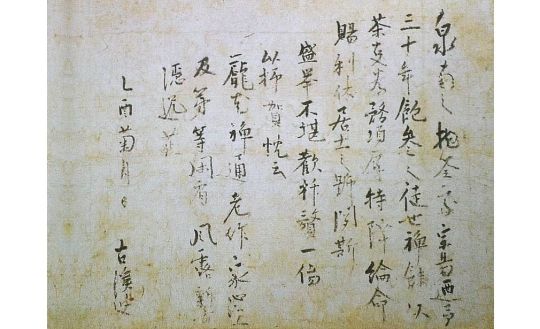
◦ the (second) small unryū-gama [小雲龍釜], arranged in Jōō's small Chōsen-buro [小朝鮮風爐];



◦ (presumably) Rikyū's ruri-suzume kōgō [瑠璃雀香合] and a go-sun-hane [五寸羽], arranged side-by-side on the tsuri-dana.

○ Goza [後座]:
◦ the chabana (the kind of flowers is not known) arranged in an oki-zutsu [置き筒], standing on an usu-ita in the middle of the toko;

As on the second day of the Eighth Month, the flower or flowers used were not specified. Most likely (since an oki-zutsu was used, meaning that the flowers would have been things that naturally are encountered in nature blooming below eye level) Rikyū would have arranged several autumnal grasses as his chabana, since it is now the beginning of that season.
The “seven grasses of autumn” (aki no nana-kusa [秋の七草]), for example, are:
- hagi [萩] (bush clover, Lespedeza bicolor]);
- obana [尾花] (also known as suzuki [芒], pampas grass, Miscanthus sinensis);
- kuzu [葛] (the kuzu vine, Pueraria montana var. lobata);
- nadeshiko [撫子] (Japanese pink, Dianthus superbus var. longicalycinus);
- ominaeshi [女郎花] (patrinia, Patrinia scabiosifolia);
- fujibakama [藤袴] (thoroughwort, Eupatorium japonicum); and.
- kikyō [桔梗] (bellflower, Platycodon grandiflorus).
And while several of these flowers were traditionally not used for chabana (ominaeshi [女郎花] and fujibakama [藤袴] are mentioned as being “forbidden from being put in a hanaire” in Jōō’s famous pair of poems; and kuzu [葛] is usually not used as well because of its extremely strong honey-like fragrance), the others were staples. If Rikyū used several flowers out of a collection (as might have been the case), he may not have remembered precisely which he used when it came time to write the details down -- and neither would he have thought detailing them that important for his records.
◦ Rikyū's Shigaraki mizusashi [信樂水指], with the hishaku resting on top, and the chaire (a ko-natsume) displayed on the mat in front of it;

◦ ko-natsume [小棗], tied in a shifuku;
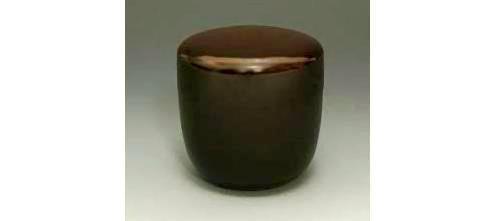
◦ the meibutsu Rinzai-in futaoki [臨濟印蓋置], placed by itself in the middle of the tsuri-dana;
◦ the Hikigi-no-saya [引木の鞘] chawan was brought out at the beginning of the koicha-temae,
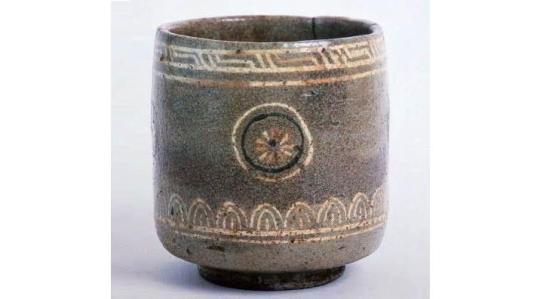
◦ with an ori-tame [折撓] resting across its mouth;

◦ the koboshi was probably a mentsū [面桶].
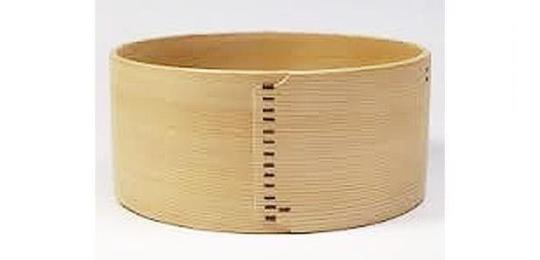
○ The kane-wari:
- the shoza was chō [調] (toko, kakemono; room, ō-ita furo; tana, kōgō and habōki, side-by-side with each touching a different kane);
- and the goza was han [半] (toko, chabana; room ō-ita furo, mizusashi with the ko-natsume placed in front and the hishaku resting on top; and the meibutsu Rinzai-in futaoki [臨濟印蓋置] in the exact center of the tana).
○ As for the kaiseki, the menu apparently consisted of:
▵ saku-saku jiru [さくさく汁] (miso-shiru containing chopped fresh greens);
▵ mozuku [海蘊] (a filamentous green seaweed, served raw, with a dressing of rice-vinegar flavored with sake and mirin);
▵ charcoal-grilled ayu [鮎];
▵ nimono [煮物], featuring matsu-take [松茸] (the pine mushroom);
▵ and as the kashi, senbei [煎餅] (rice crackers), and yaki-guri [焼き栗] (roasted chestnuts).
0 notes
Text
4. Bailarín
Tabla de prompts
día cuatro atrasado del @miloshipfest, y nuestro invitado especial de hoy es Ikki. uwu (aunque les advierto que hay una chibi fem!Shun suelta por ahí).
Muy poca gente le creía a Milo cuando decía que bailaba ballet por profesión.
O al menos el fenómeno comenzó cuando se mudó a Japón.
Allá en Grecia, todos decían que él, al tener el drama griego en las venas, era perfectamente capaz de expresar una enorme gama de sentimientos que no eran suyos a través de movimientos gráciles, levantando a bellas chicas y dando piruetas.
―Whoa... ―detuvo su rutina de calentamiento cuando escuchó el pequeño suspiro detrás de sí. Sonrió al ver a una pequeña de cabellos castaños y ojos verdes observarle con el asombro que él observaba a sus otrora maestros―. ¡Su cabello es tan bonito! ―y Milo no pudo más que soltar una risa ante tan inusual comentario.
―Gracias, el tuyo también es lindo. ―la niña también soltó una risita y se balanceó, con las manos escondidas en su tutú y agarrando las coletas con animalitos.
―Niisan me ayuda a lavarlo y dice que se ve muy bonito en niñas pero que como él es niño y que en niños no se ve bien ¿verdad que sí? Si el de usted hasta es de oro... ―Milo rio aún más ante lo rápido y entusiasmada que hablaba la niña, además de que le pareció algo tierno que alabara tanto su cabello.
― ¿Y qué más te dice tu hermano? ―se arrodilló a su nivel y la niña se puso pensativa por un momento antes de responderle.
― ¡Dice que a mi edad quería también ser bailarín pero padre no lo dejó y que por eso se queda todo mi entrenamiento y también dijo que usted es muy bonito bailando! ―Milo arqueó una ceja, tratando de descifrar lo que le acababa de decir. Disimuladamente, observó a las gradas. En la esquina había un chico de cabellos negros que intentaba mantener su vista pegada en un libro, pero Milo sonrió cuando el chico notó que lo habían atrapado viendo y se regresó a “su lectura”.
― ¿Cuál es tu nombre?
― ¡Shun! ―Milo tomó una de las tarjetitas de presentación que le dijo su hermanastro que se sacara, y se la entregó a la niña.
―Dale esto a tu hermano y dile que es bienvenido a visitar mi entrenamiento cualquier día.
10 notes
·
View notes
Text
Netflix film examines why NASA shunned women astronauts in early days https://t.co/nofVMt3EuK
Netflix film examines why NASA shunned women astronauts in early days https://t.co/nofVMt3EuK
— Anderson Gama (@smashse) April 20, 2018
from Twitter https://twitter.com/smashse
April 20, 2018 at 11:22AM
via IFTTT
0 notes
Text
LOS CUCHILLOS SHUN
Seguramente ha oído o visto estos cuchillos tan especiales, la marca japonesa Kai, entre su gama de cuchillos, tiene este clásico llamado Shun.
El motivo de su buena fama es la extrema calidad de su acero y a su bello acabado.
Vamos a introducirlos en el mundo del cuchillo Shun, empezamos por su fabricante Kai, esta empresa de 100 años de antigüedad se distingue por hacer sus cuchillos inspirados en las Katanas de los Samurais, sita en la cuidad de Seki, la cual es famosa por la fabricación de espadas, al menos con 700 años de tradición en su manufactura.
Kai tiene, en verdad, un prestigio de culto en su país, que ya se extiende por Europa y EEUU. Sus cuchillos tiene ese aire de calidad indiscutible, basado en la forja de las antiguas Katanas y avanzando cada día en nuevas tecnologías, junto con una estética oriental y elegante, nos presentan cuchillos para cada uso, la elección adecuada de él para cocinar es esencial.
Vamos a explicar de qué está hecho un Shun, su acero es Damasquinado, muy apreciado por los cocineros, el acero Damasco es una forja manual de 32 capas de acero, con cada capa se forman las ondulaciones características de este tipo de acero. La capa interior es de acero V-Gold-10 que es durísimo, con aleación de cobalto, carbono y molibdeno Vanadio lo que lo convierte en un cuchillo afilado en extremo, y con el toque final del afilado manual por manos expertas.
Cada Shun es singular por todas estas razones, cada “agua” del damasquinado es diferente y su cuchillo único, no hay dos igual.
Tanto su tapa trasera, como la virola forjada son de acero inoxidable y su mango es de madera fina de Pakka negra, con esa forma característica Japonesa de “castaña”, que se ajusta naturalmente a su mano.
Esta serie tiene hojas con la forma tradicional Japonesa, pero sobretodo con las formas Occidentales y Europeas, como la inclusión de los alveolos, estos forman al cortar bolsitas de aire entre el filo y el producto, con lo cual se reduce al mínimo la fricción y la adherencia, se rompe menos el alimento y se separa del cuchillo con facilidad.
Tiene formas y usos para pelar verduras, tomates, cuchillos de chef o cocinero, para filetear, deshuesar, para cortar pan con un dentado especial que reduce al mínimo las migas y por supuesto las formas orientales, el Santoku: sería su cuchillo universal, como nuestro Chef, corta carne, verdura y pescado, de hecho Santoku significa tres usos.
El Nakiri: el preferido para cortar verduras, pero cuidado, nosotros por su forma nos recuerda a una hacha de picar hueso, pero no lo es, el Nakiri es para verdura.
El Shun es un instrumento artesano, con un filo agudo y de gran belleza en sus formas, es perfecto para Chefs y cocineros sibaritas del hogar, que buscan una joya, su cuchillo ideal.
Por último unos consejos para su cuidado. Lavar a mano después de su uso y secar con un paño suave, desde la parte trasera hasta el filo, no lo ponga en el lavavajillas pues podría dañar su filo y mango, pues al ser de madera natural, con calor y agua podría agrietarse, y como siempre no corte sobre superficies duras, si no sobre una tabla de madera o sintética.
Al guardarlo, que el corte no entre en contacto con objetos metálicos, evitará dañar el filo. Recuerde que tiene entre sus manos una pieza única, que durará años, siguiendo estas recomendaciones.
from WordPress http://ift.tt/2p3DWGy
0 notes
Text
Good Mood

Shun: Pay up!
7 notes
·
View notes
Note
Roast me Shun.

Shun: Try again.
7 notes
·
View notes
Text
Happy Birthday to Shun Gama!

2 notes
·
View notes
Text
Comfort

Shun: Thanks.
5 notes
·
View notes
Note
Trick or treat or pipe bomb!
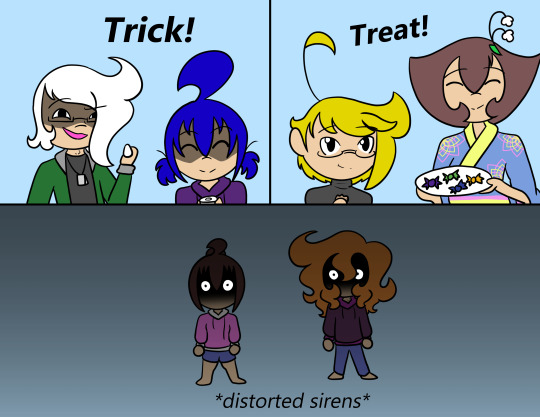
Mod Robin: Yes :3
#ask crystal candy#ask#kylyn jagger#kokoro candy#elliot collins#sadie tsuki#hana thomas#shun gama#otaku squad
8 notes
·
View notes
Text
Happy Halloween!

#ask crystal candy#kylyn jagger#elliot collins#sadie tsuki#hana thomas#shun gama#kokoro candy#otaku squad#halloween#the amazing digital circus
8 notes
·
View notes
Text

Mod Robin: Please take this meme while I work on the next story comic :3
10 notes
·
View notes
Text
Happy Birthday to Shun Gama!

8 notes
·
View notes